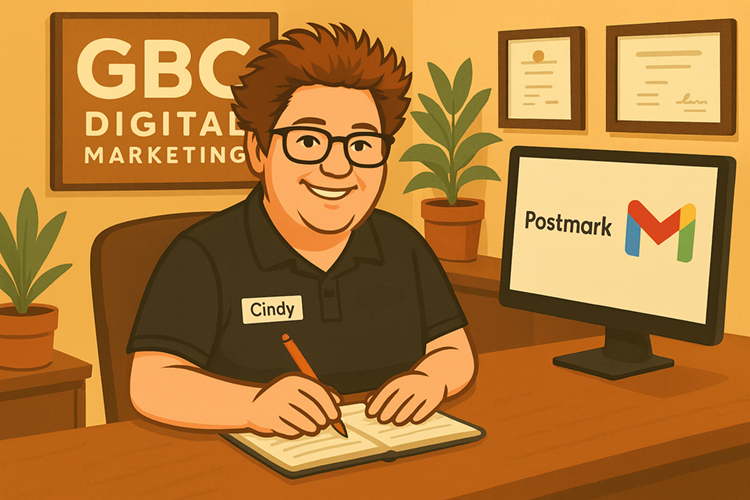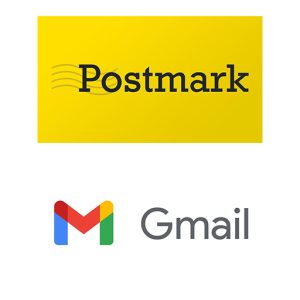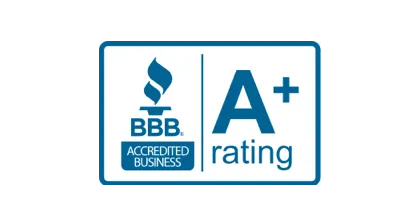
Postmark or Gmail for Website Contact Forms
At GBC Digital Marketing, we don’t set up your day-to-day email service or manage your inbox, (that’s usually an IT provider’s job). But we do care about one critical piece: making sure you actually get the leads from your website forms. If someone fills out your contact form or request-a-quote form, that email should show up in your inbox every single time. Unfortunately, with the way email has changed over the last few years, the old “default” way WordPress sends those form messages just isn’t reliable anymore.
That’s why we recommend either setting up a Postmark account or giving us access to a Gmail/Google Workspace account we can connect your site to. Here’s why that matters for your business.

Why WordPress Emails Get Lost
WordPress sites rely on a built-in mailer function (called PHP mail or wp_mail()) to send form notifications. The problem is that this method doesn’t guarantee delivery. It just “hands off” the message to the server and hopes it gets delivered.
The issues are:
- No authentication: Messages often lack the ID checks that modern inboxes require.
- Shared servers: If another website on the same server has a spam problem, your mail gets dragged down with it.
- Invisible failures: WordPress will say “Message sent” even if the email was never delivered.
This means form leads can silently disappear, and you may never know a customer reached out.
Stricter Spam Rules Changed the Game
Over the last couple of years, companies like Google (Gmail) and Yahoo have made inbox rules much stricter. These changes were aimed at blocking spammers and scammers, but they also affect small business websites:
- Messages must be authenticated with SPF, DKIM, and DMARC.
- Mail must come from a trusted sending service, not a random web server.
- Spam complaint rates must stay extremely low (below 0.3%).
If those rules aren’t met, emails often get blocked, marked as spam, or never delivered at all. This is why website forms that rely on the old method frequently fail.
How Postmark and Gmail Fix the Problem
A mail handler is like a reliable delivery truck for your website emails. Instead of relying on the flaky built-in WordPress mail system, we route messages through a trusted provider.
Option 1: Postmark (our top choice)
- Built specifically for transactional emails like form submissions and password resets.
- Authenticates your domain automatically with SPF and DKIM.
- Provides delivery logs so we can confirm every email was sent successfully.
- Keeps your emails separate from marketing blasts, so your reputation stays clean.
Option 2: Gmail or Google Workspace
- We connect your site to a Gmail/Workspace account (like forms@yourdomain.com).
- Uses Google’s secure system to send emails, which inboxes trust.
- Great for businesses that don’t send a huge volume of form emails each day.
Both options make sure your contact forms actually land in your inbox, instead of disappearing into spam filters.
What We Do for You
Here’s how we set things up:
- Help you choose Postmark or Gmail/Workspace based on your needs.
- Connect your WordPress site to the handler with a secure plugin.
- Add the proper authentication records (SPF/DKIM, and recommend DMARC).
- Test the system to confirm delivery.
- Monitor performance and make sure nothing slips through the cracks.
FAQs
Does this replace my regular email service?
No. This only affects emails sent from your website (like form submissions). Your day-to-day email runs the same way it always has.
Why can’t we just leave WordPress as-is?
Because too many form emails will get lost under the new rules. We don’t want you missing out on leads.
Do you need my main email password?
No. With Gmail/Workspace, we use a secure connection method called OAuth, so we never store your password.
The Takeaway
Your website should be a lead machine, not a black hole for customer inquiries. Because of new spam rules and the unreliability of WordPress’s default mailer, using a third-party handler like Postmark or Gmail is now essential. At GBC Digital Marketing, we recommend this setup so you can be confident every website lead shows up where it belongs…in your inbox.






